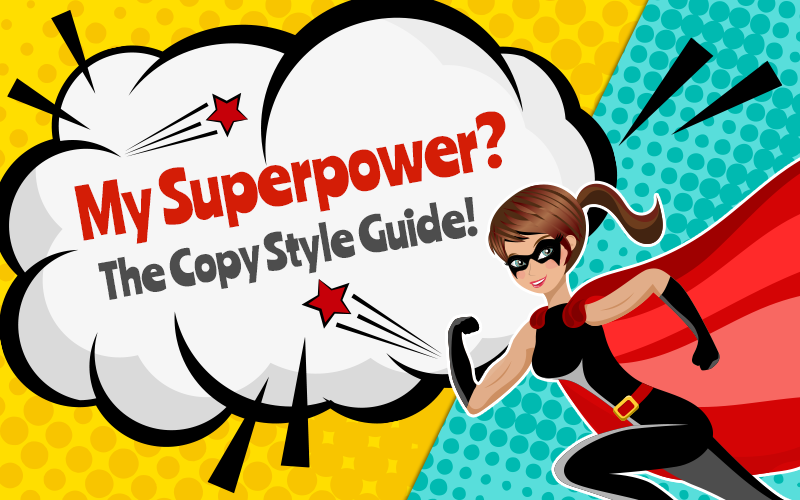Copy editors are the unsung superheroes of every marketing team. Every day they put on their capes and save us all from making fools of ourselves by catching spelling errors in subject lines, correcting grammar gaffes and just generally polishing our prose. Katey Charles Communications’ senior copy editor, Anne Kelley Conklin, has her own superpower to share: the copy style guide.
“The stylebook we follow says not to use italics, but that’s part of our company name and tagline!”
“I have a question that isn’t addressed in the stylebook …”
“In some of our emails, the subject lines have every word capitalized but in others only the first word is uppercase. Which should it be?”
Creating a company-specific style guide will save you time and frustration by settling these copy conundrums before your fingers hit the keyboard. A style guide sets consistent standards for grammar, punctuation, capitalization and more. It helps create a cohesive, brand-compliant tone for all of your marketing materials.
Of course, it’s a good idea to follow a reputable style guide for most issues. We typically follow the AP Stylebook, for example, but others prefer to use the Chicago Manual of Style, or the MLA, or the APA. Then, it’s good to pick a specific dictionary for reference because, believe it or not, they differ. But for those instances when your brand has specific exceptions to your chosen stylebook and/or dictionary, having your own style guide will ensure consistency across all of your marketing materials, no matter how many different people write them.
To create your own style guide, you can simply start with an alphabetical list. For example:
- Ampersands: Do not use. Always spell out “and.”
- Commas: Use a comma before “and” or “or” in a series of items.
Example: “I had eggs, toast, and juice for breakfast.” - Initech: Always italicize the “tech” in our company name.
- Phone numbers: Do not use the “1-” before toll-free numbers. Example: 800-234-5678.
For a more detailed or comprehensive guide, you can create sections to organize issues by type, e.g., Abbreviations, Acronyms, Capitalization, Company-Specific Terms, etc. Choose whichever format you think is easier for your team members to use. And you should let them know to start with this guide when looking for an answer before consulting a published guide, as the company-specific rules trump the other in the case of conflicting recommendations.
A custom style guide is easy to create and can be updated anytime. It’s especially helpful to make the guide available electronically so it can be revised quickly and so users can employ a search feature to quickly find what they’re looking for. There should be just one person in charge of updating your style guide, though, to avoid inconsistency.
Client-specific style guides are part of our everyday quality-assurance checklists here at Katey Charles Communications. If you need help getting one started, send us a note at . We are happy to help!

